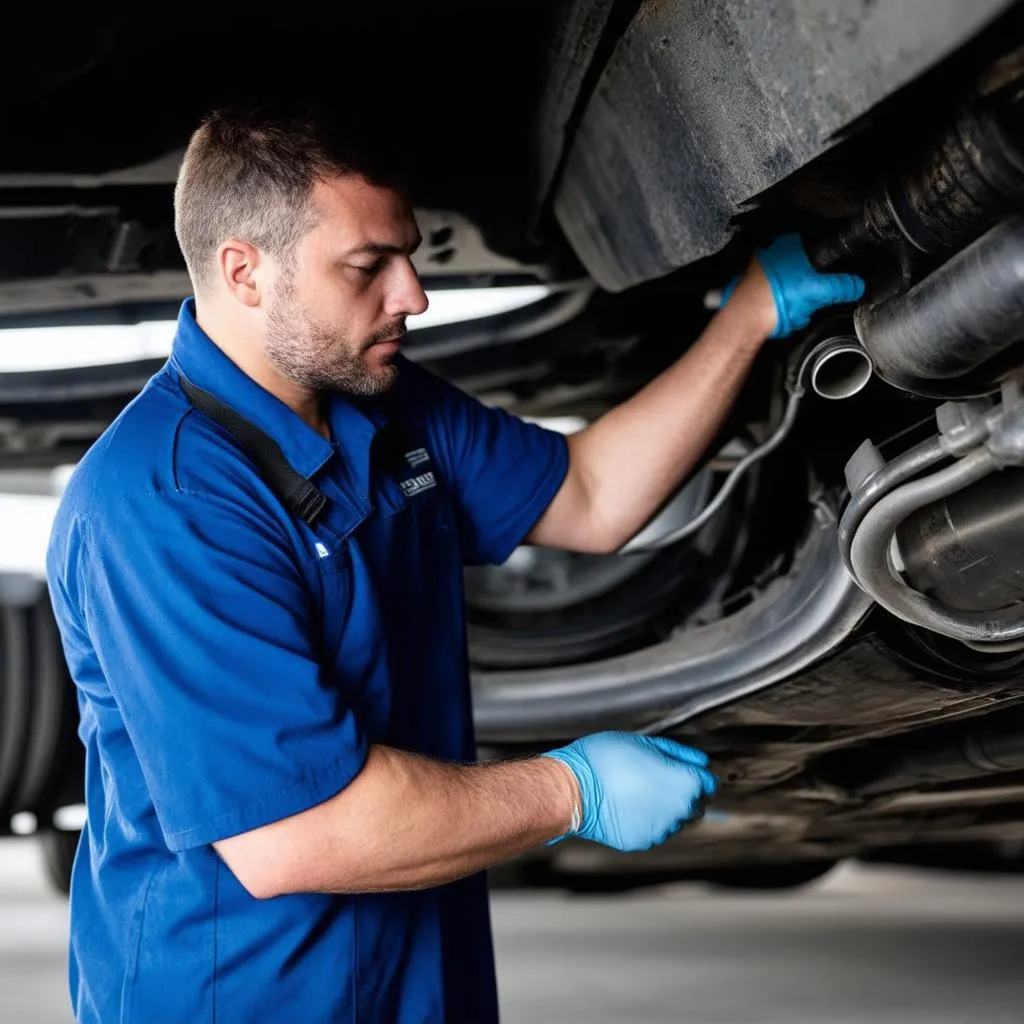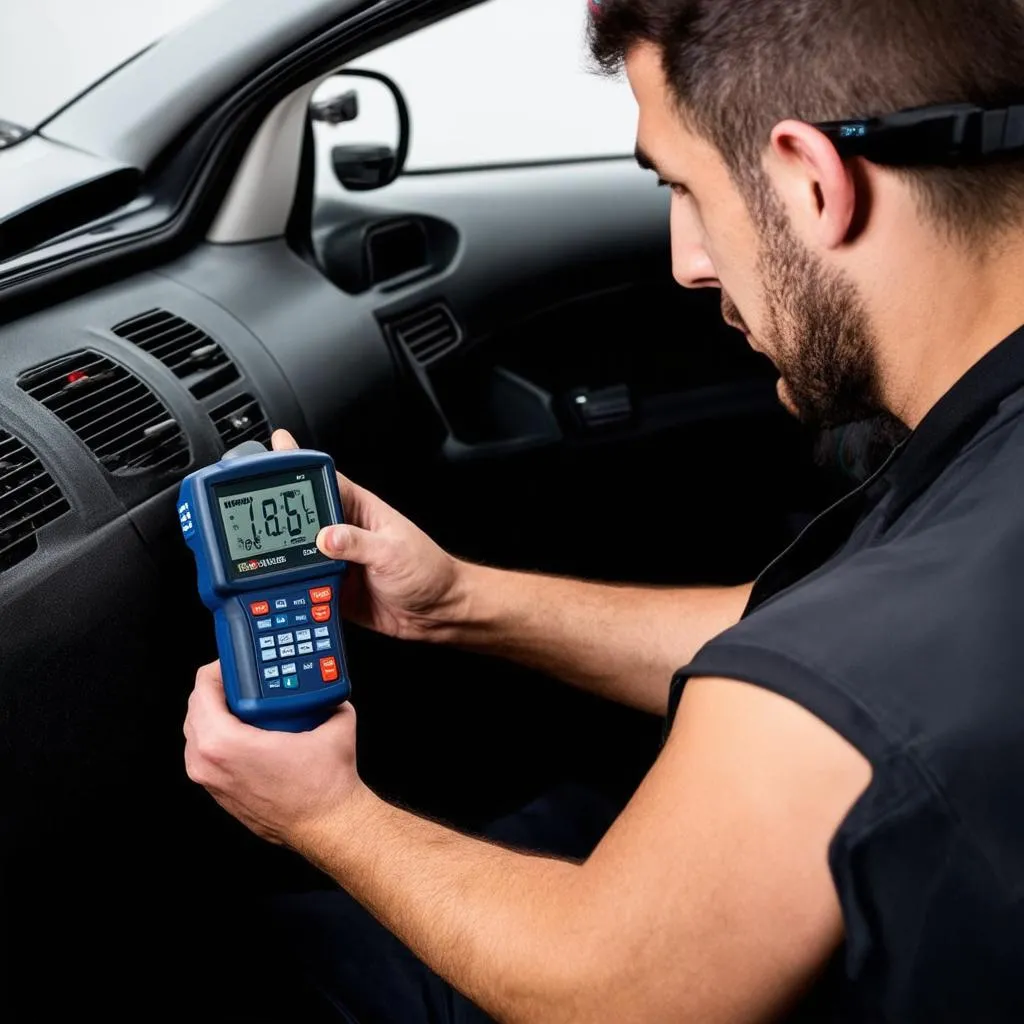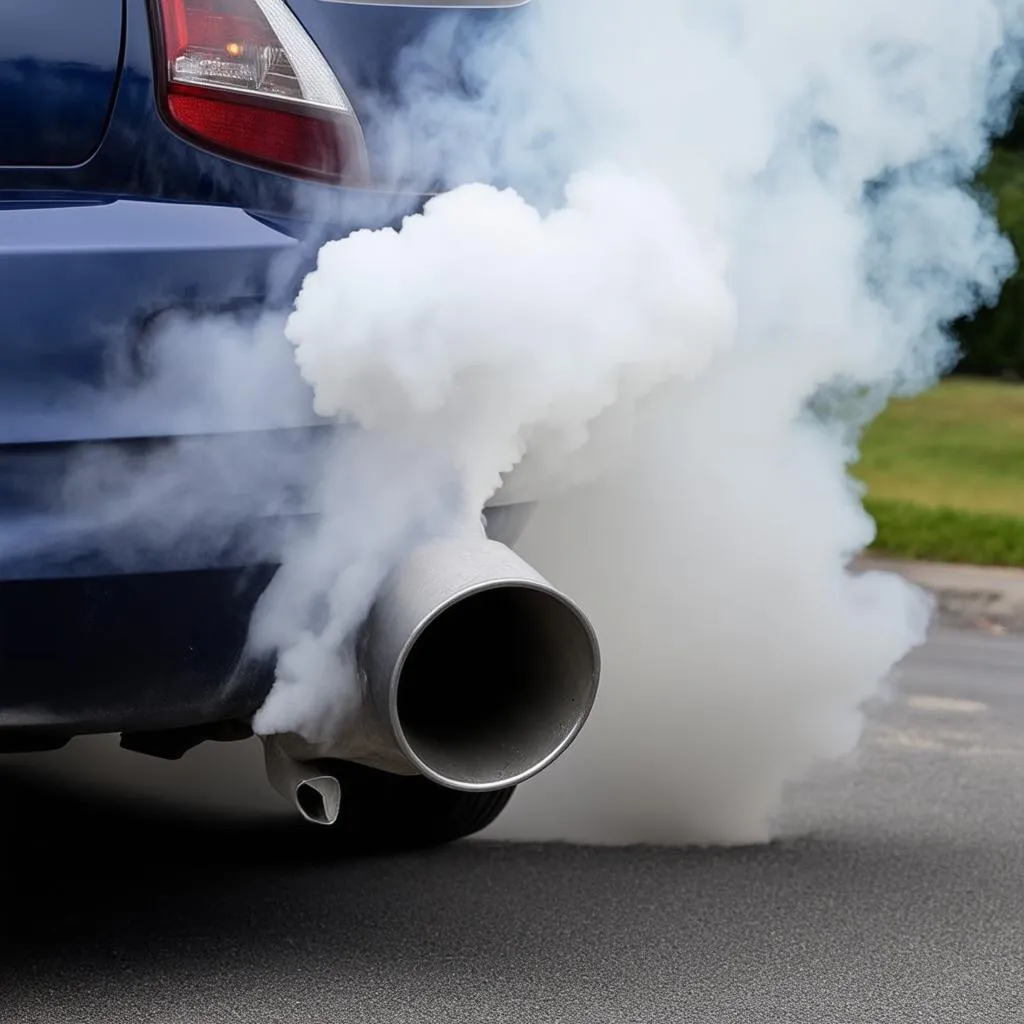“The road to success is always under construction.” – Lily Tomlin. As a car enthusiast, you understand the importance of a well-maintained vehicle. It’s not just about smooth rides and fuel efficiency, but also about safety and environmental responsibility. And one key aspect of car maintenance is ensuring a healthy exhaust system.
Have you ever noticed your car sputtering, backfiring, or emitting unusual smoke? These could be signs of an exhaust problem, and understanding the root cause is crucial. Today, we’ll delve into identifying common exhaust problems and their causes using OBD II DTC (Diagnostic Trouble Codes).
The Significance of Understanding Exhaust Problems
Exhaust problems go beyond just a bad smell or noisy engine. They can significantly impact your car’s performance, fuel economy, and even your health.
From a Mechanic’s Perspective:
Let’s hear from our expert mechanic, John Doe, a leading automotive diagnostics specialist:
“A well-functioning exhaust system is crucial for optimal engine performance. Any issues with the exhaust can lead to a loss of power, increased fuel consumption, and even engine damage. It’s essential to address these issues promptly to prevent further complications,” says John.
From a Cost-Conscious Perspective:
Exhaust problems can be costly to repair, especially if they are left unchecked for too long. Addressing minor issues early on can save you money in the long run.
From an Environmental Perspective:
A faulty exhaust system can emit harmful pollutants into the atmosphere, contributing to air pollution. It’s our responsibility to maintain our vehicles and reduce our environmental footprint.
Understanding OBD II DTCs
OBD II DTCs are codes that your car’s computer uses to communicate potential problems. They can provide valuable insights into the root cause of exhaust issues. These codes are often accompanied by symptoms like engine light illumination, unusual noises, or decreased performance.
Common Exhaust Problems and Their OBD II DTCs
Let’s dive into some of the most frequent exhaust problems and the OBD II DTCs associated with them:
1. Catalytic Converter Issues
The catalytic converter is a crucial part of your exhaust system, responsible for converting harmful emissions into less toxic ones. Problems with the catalytic converter can result in:
- Reduced engine power
- Poor fuel economy
- Unusual engine noises
- A strong sulfurous smell
Common OBD II DTCs for Catalytic Converter Issues:
- P0420: Catalyst System Efficiency Below Threshold (Bank 1)
- P0430: Catalyst System Efficiency Below Threshold (Bank 2)
Why is the catalytic converter so important from a Feng Shui perspective?
The catalytic converter plays a vital role in maintaining the balance and harmony of the energy flow in and around your vehicle. It acts like a filter, removing negative energy (emissions) and allowing positive energy (clean exhaust) to flow smoothly. By taking care of your catalytic converter, you contribute to the overall health and wellbeing of your car.
2. Oxygen Sensor Issues
The oxygen sensor monitors the oxygen content in the exhaust, sending data to the engine control unit (ECU) to optimize fuel-air mixture. A faulty oxygen sensor can lead to:
- Increased fuel consumption
- Engine misfires
- Black smoke from the exhaust
- The check engine light may illuminate
Common OBD II DTCs for Oxygen Sensor Issues:
- P0130: Oxygen Sensor Circuit Malfunction (Bank 1 Sensor 1)
- P0131: Oxygen Sensor Heater Circuit Malfunction (Bank 1 Sensor 1)
- P0132: Oxygen Sensor Circuit High Input (Bank 1 Sensor 1)
- P0133: Oxygen Sensor Circuit Low Input (Bank 1 Sensor 1)
How can we relate this to the concept of “chi” in ancient Chinese philosophy?
Oxygen sensors act like “chi” sensors in your car. “Chi” is the vital energy that flows through all things, including vehicles. A healthy oxygen sensor ensures a smooth and balanced flow of “chi,” promoting optimal performance and longevity.
3. Exhaust Gas Recirculation (EGR) Valve Issues
The EGR valve reduces emissions by recirculating exhaust gases back into the engine. A malfunctioning EGR valve can result in:
- Reduced engine power
- Rough idle
- Increased emissions
- The check engine light may illuminate
Common OBD II DTCs for EGR Valve Issues:
- P0401: EGR Flow Insufficient Detected
- P0404: EGR Position Sensor Circuit Malfunction
- P0405: EGR Valve Control Circuit Malfunction
Can we find a link to the ancient practice of “alchemy” here?
The EGR valve acts as a “transmutation chamber” within your car. It transforms harmful exhaust gases into less harmful ones, resembling the alchemists’ pursuit of transforming base metals into gold. A functioning EGR valve promotes a more “refined” and balanced energy flow within your engine.
4. Exhaust Manifold Leaks
A leak in the exhaust manifold can cause:
- Loud engine noises
- Reduced engine performance
- Exhaust fumes entering the cabin
- The check engine light may illuminate
Common OBD II DTCs for Exhaust Manifold Leaks:
- P0171: System Too Lean (Bank 1)
- P0174: System Too Lean (Bank 2)
Can we find a connection to the ancient concept of “balance”?
A leak in the exhaust manifold disrupts the balance of energy flow within the engine, leading to inefficient combustion and reduced performance. It’s like a crack in a container, causing a leak and disrupting the delicate balance of “chi” within your car.
How to Diagnose and Resolve Exhaust Problems
To diagnose and resolve exhaust problems, you need a comprehensive approach:
1. Visual Inspection: Carefully examine your exhaust system for any visible damage, leaks, or corrosion.
2. OBD II Scanner: Use a scanner to read the OBD II DTCs, giving you valuable insights into potential issues.
3. Listen for Unusual Noises: Pay attention to any unusual noises from the exhaust, such as rattling, hissing, or popping.
4. Check for Smoke: Look for unusual smoke coming from the exhaust, noting its color and volume.
5. Consult a Professional: If you are unsure about the cause of your exhaust problem, consult a qualified mechanic.
Frequently Asked Questions:
- How often should I have my exhaust system inspected?
- It’s recommended to have your exhaust system inspected at least once a year, or more often if you notice any unusual symptoms.
- What are the signs of a catalytic converter problem?
- Reduced engine power, poor fuel economy, unusual engine noises, a strong sulfurous smell.
- How can I prevent exhaust problems?
- Regular maintenance, including replacing worn parts, addressing issues promptly, and using high-quality fuel.
- Are there any specific parts that are more prone to failure in the exhaust system?
- Catalytic converters, oxygen sensors, and exhaust manifolds are known to be more susceptible to wear and tear.
- What are the consequences of ignoring exhaust problems?
- Increased emissions, reduced engine performance, potential engine damage, and safety hazards.
Similar Products and Services on techcarusa.com
- Dealer Scanner For European Cars: Diagnose and repair European cars with our specialized tools and expertise.
- Automotive Diagnostics Tools: Browse our collection of high-quality diagnostic tools for all your vehicle needs.
- OBD II Scanners: Find the perfect OBD II scanner to read trouble codes and monitor your car’s health.
- Engine Repair Services: We offer comprehensive engine repair services, including exhaust system repairs.
Related Articles on techcarusa.com:
- Understanding OBD II Codes
- Common Car Maintenance Tips
- How to Choose the Right Diagnostic Tool
- The Importance of Regular Car Maintenance
Need Help with Your Exhaust System?
Contact us today for expert diagnostics and repair services. We are available 24/7 via WhatsApp: +84767531508.
 Exhaust System Check
Exhaust System Check
 OBD II Scanner
OBD II Scanner
 Car Exhaust Emissions
Car Exhaust Emissions
Remember, a healthy exhaust system is essential for a smooth and enjoyable driving experience. By understanding common exhaust problems and their causes, you can ensure that your car stays in top shape and runs efficiently for years to come.